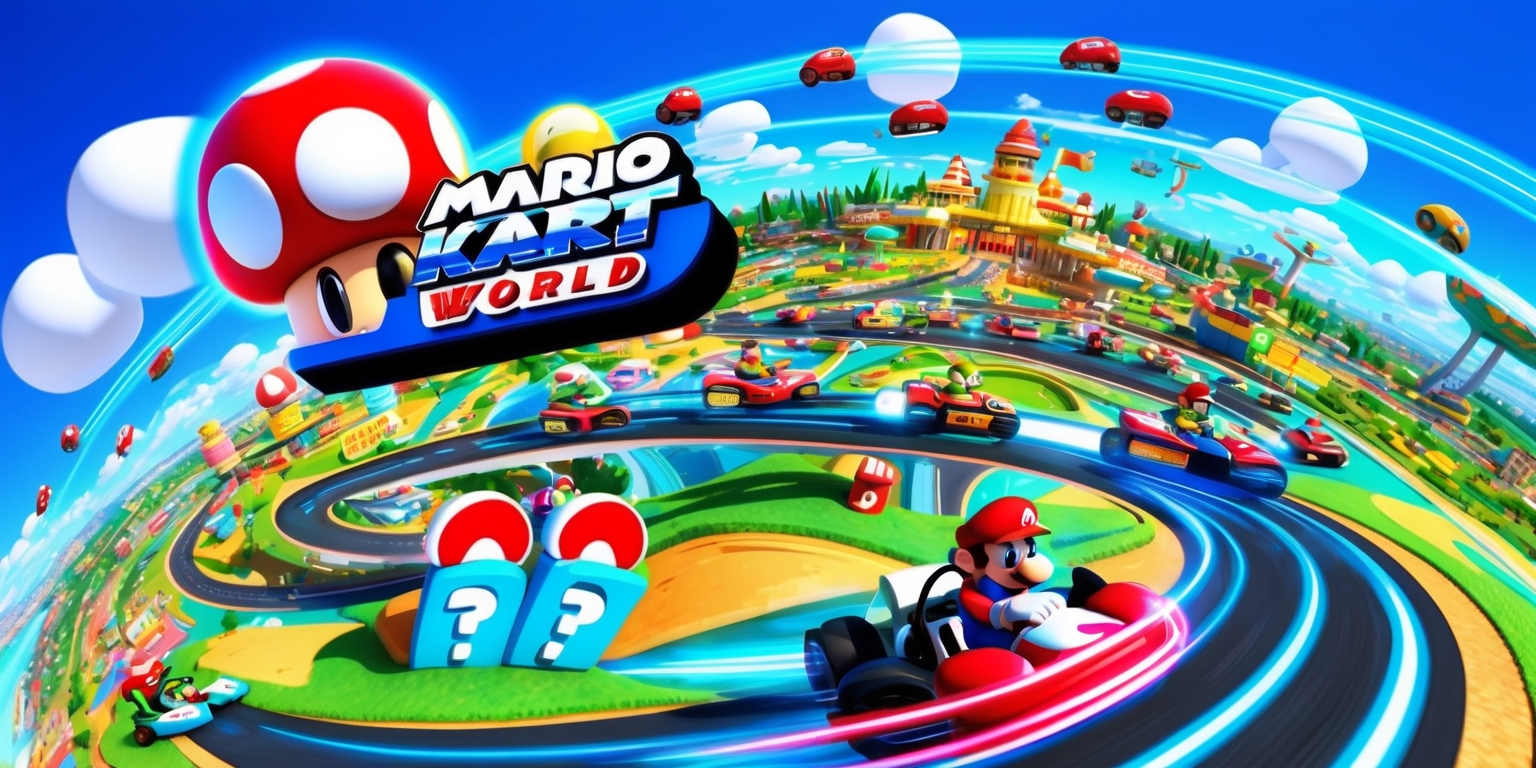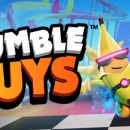Unveiling Hidden LAN: Revolutionizing Mario Kart World Multiplayer Experiences
Jun-12-2025

The world of Mario Kart World hides a remarkable feature for players keen to explore connectivity beyond the usual local wireless setup. Details about a secret LAN mode have intrigued the community, offering an alternative pathway for competitive racing and nostalgic multiplayer adventures. This feature, tucked away from the standard menu options, not only elevates the Here's a rephrased version that maintains the original context: "gaming experience while simultaneously providing an entry point" for tournaments and extensive multiplayer sessions. For those who have experienced previous iterations of Mario Kart and cherished past LAN gatherings, this hidden option is an unexpected delight. The intricate system design and thoughtful inclusion of LAN settings bring together technical innovation with playful fun, a combination that continues to spark lively discussion among racers and gaming enthusiasts alike.
Exploring the Concealed Connectivity Feature
Mario Kart World presents a unique twist to network gaming through a hidden option that enables LAN connectivity. Although it does not appear directly on the primary menu or settings screen, dedicated players have discovered that this mode is available just like in previous iterations of the franchise. By delving into the settings and navigating through non-obvious menu options, racers can access this feature to engage in gameplay over a local network. This intentional concealment may seem perplexing at first, yet it serves a particular niche that values low latency and enhanced connectivity. The covert design underscores the developers’ playful dedication to providing additional layers of multiplayer interaction. Dedicated community members and tournament organizers have praised this hidden mechanism for its capability to support larger groups and maintain smooth, lag-free performance throughout high-octane races.
Delving into the Networking Setup
The concept of a Local Area Network (LAN) in Mario Kart World extends the boundaries of traditional wireless gaming. Unlike local wireless mode which connects devices via local Wi-Fi with a limit on the number of devices, the LAN option utilizes a more direct connection between devices. This setup minimizes external interference and can significantly reduce any lag, ensuring that gameplay is fluid even when multiple players are connected simultaneously. Switch consoles, especially those equipped with Ethernet ports in their docks, can be linked through a wired connection or even via a wireless LAN hotspot, demonstrating flexibility in play styles and technical requirements. The careful integration of LAN functionality within the game speaks volumes about the developers’ commitment to safeguarding a smooth gaming experience for competitive events and social gatherings alike.
Enhanced Multiplayer Capacity and Competitive Spirit
One of the dramatic benefits of engaging Mario Kart World through the hidden LAN mode is the increased multiplayer capacity it offers. Standard local wireless play is typically limited to eight Switch consoles, accommodating a maximum of 16 players if two controllers are used per console. However, by enabling LAN mode, the number of connected devices can stretch to as many as 24, opening up the possibility for larger, more dynamic tournaments. This increased capacity is particularly important as it facilitates competitive environments where numerous racers can partake simultaneously. The enhanced player capacity not only elevates the adrenaline rush during races but also opens opportunities for innovative tournament formats and community-driven events. For fans of large-scale competitive gaming, this refined multiplayer capacity reinvents the classic Mario Kart experience with a modern twist.
Menu Design and Interface Intrigue

Mario Kart World's approach to incorporating the hidden LAN mode reveals a distinctive perspective on user interface design. Rather than placing the LAN option in a prominent location on the main menu, the developers opted to hide it, making it accessible only through less conspicuous paths. This decision creates a sense of discovery for the players who stumble upon or actively search for alternative connectivity options. The interface subtly guides users away from a cluttered presentation while preserving the core features through standard local wireless play. It challenges the community to explore deeper settings and appreciate the evolution of game customization. While some players might find this an unconventional design decision, others recognize it as a creative nod to dedicated fans who value a nuanced and enriched multiplayer setup that reflects both technical sophistication and playful mystery.
Technical Innovations and Hardware Integration
The LAN mode option Within Mario Kart World, the experience clearly illustrates the flawless merging of… hardware capabilities with software enhancements. Each Switch 2 dock comes with an Ethernet port, which significantly improves the potential for creating a robust, wired connection during gameplay. This infrastructure stands in contrast to previous generations, where additional adapters were necessary. The incorporation of an Ethernet port into the design facilitates faster data transmission, effectively minimizing latency issues that can disrupt the rhythm of a race. Whether playing via a physical connection or through a wireless hotspot setup, users benefit from a more consistent and responsive gameplay experience that leverages cutting-edge hardware innovation. This technical upgrade not only reinforces the benefits of LAN connectivity but also illustrates the thoughtful coordination between device design and network performance.
Multiplayer Dynamics and Controller Flexibility
Beyond connectivity, the hidden LAN feature in Mario Kart World brings unique enhancements to multiplayer dynamics. Local wireless play typically limits users to configurations that only allow a couple of controllers per console. However, by switching to LAN mode, players gain the advantage of using additional controllers, supporting four instead of the usual two on a Switch console. This extra capacity fosters more inclusive and engaging free roam sessions, where friends can join the race without the common hardware restrictions found in standard play. Moreover, the possibility to connect a larger roster of participants ensures that each race is packed with action and a greater variety of driving styles. This robust controller setup encourages cooperative gameplay and team-based strategies that transcend traditional racing routines, enriching the overall multiplayer experience.
Broadening the Scope of Social Gaming
The introduction of LAN connectivity in Mario Kart World has significantly broadened the scope of social gaming experiences. By shifting from Wi-Fi-based connections to a LAN setup, the game minimizes round-trip signal delays and external server dependencies, which can often hamper performance. This ensures that racing events are not only highly immersive but are also free from common connectivity issues, such as lag or disrupted sessions. The option to play via LAN lets players host local tournaments Featuring a substantially higher number of participants, which can be particularly appealing in social or classroom settings where competition and community are at the heart of the experience. Its capability to maintain stable gameplay in densely populated local networks is a distinctive advantage, making it an ideal choice for both casual gatherings and more organized competitive events.
Comparative Insights: Wireless versus Wired Modes
A useful discussion among the gaming community revolves around the benefits of a wired LAN connection compared to the traditional local wireless mode in Mario Kart World. Wireless play offers convenience, but it comes with inherent limitations, such as reduced number of playable consoles and potential interference from surrounding devices. In contrast, the LAN mode’s design leverages both wired and wireless LAN setups to achieve a more stable connection. This mode perfectly fits scenarios demanding precision and low latency. The engineering behind this alternative mode ensures robust performance regardless of environmental variables, permitting longer races and larger multiplayer sessions without compromising on performance. The distinctions between these modes illustrate how innovative design can cater to different play styles, ultimately empowering players to select the most optimal configuration for their specific gaming context.
Implications for Tournaments and Esports Events
For enthusiasts organizing competitive tournaments, the hidden LAN mode in Mario Kart World offers significant advantages. Its ability to accommodate a greater number of consoles, as well as enhanced stability through wired connections, makes it a preferred choice for such events. Recent community discussions have highlighted instances where tournaments benefited from the award-winning low latency, Guaranteeing that every bend and curve along the path meets the mark track was rendered in real time. Organizers can set up multiple groups playing simultaneously without fear of connectivity disruptions. This hidden mode transforms casual racing into a professional-grade esports environment by guaranteeing consistent synchronization across players. As competitive gaming continues to evolve, features like this highlight the potential for more creative tournament structures that blend traditional local play with modern networking techniques to deliver a truly engaging competitive experience.
Revisiting Retro LAN Experiences and Nostalgia
Many long-time fans of the Mario Kart series have fond memories of earlier LAN-based gaming sessions, where multiple consoles were linked in lively gatherings that transcended typical local play experiences. The hidden LAN mode in Mario Kart World offers a modern nod to those cherished days while providing a refined version of the connectivity that once defined LAN parties. This feature evokes sentiments of personal triumphs and collective excitement during historic tournaments and school esports leagues. By integrating this option into the modern gaming environment, the developers connect past and present in a fluid evolutionary step. The nostalgic value is palpable among fans who recall the electrifying atmosphere of past LAN rumbles, reaffirming that the spirit of multiplayer camaraderie remains central to the Mario Kart legacy and persistently fuels the aspirations of emerging racers.
Unveiling the Free Roam Experience Through LAN
The hidden network option in Mario Kart World not only excels in competitive racing but also introduces an unconventional free roam mode when accessed through LAN. Instead of being confined to traditional track-bound races, players are empowered to explore expansive arenas together. This mode enables a more relaxed exploration where the focus shifts to discovering hidden aspects of the game world and sharing spontaneous adventures. While local wireless play might restrict free roam dynamics by limiting controller usage, the LAN mode sidesteps these limitations and allows a greater number of participants to interact simultaneously. The design supports an environment where free roaming is both a social and strategic experience, offering lively interactions and dynamic play that redefines the way multiplayer engagement is perceived. Its innovative integration into a trusted racing franchise adds depth that enhances both exploration and interactive excitement.







